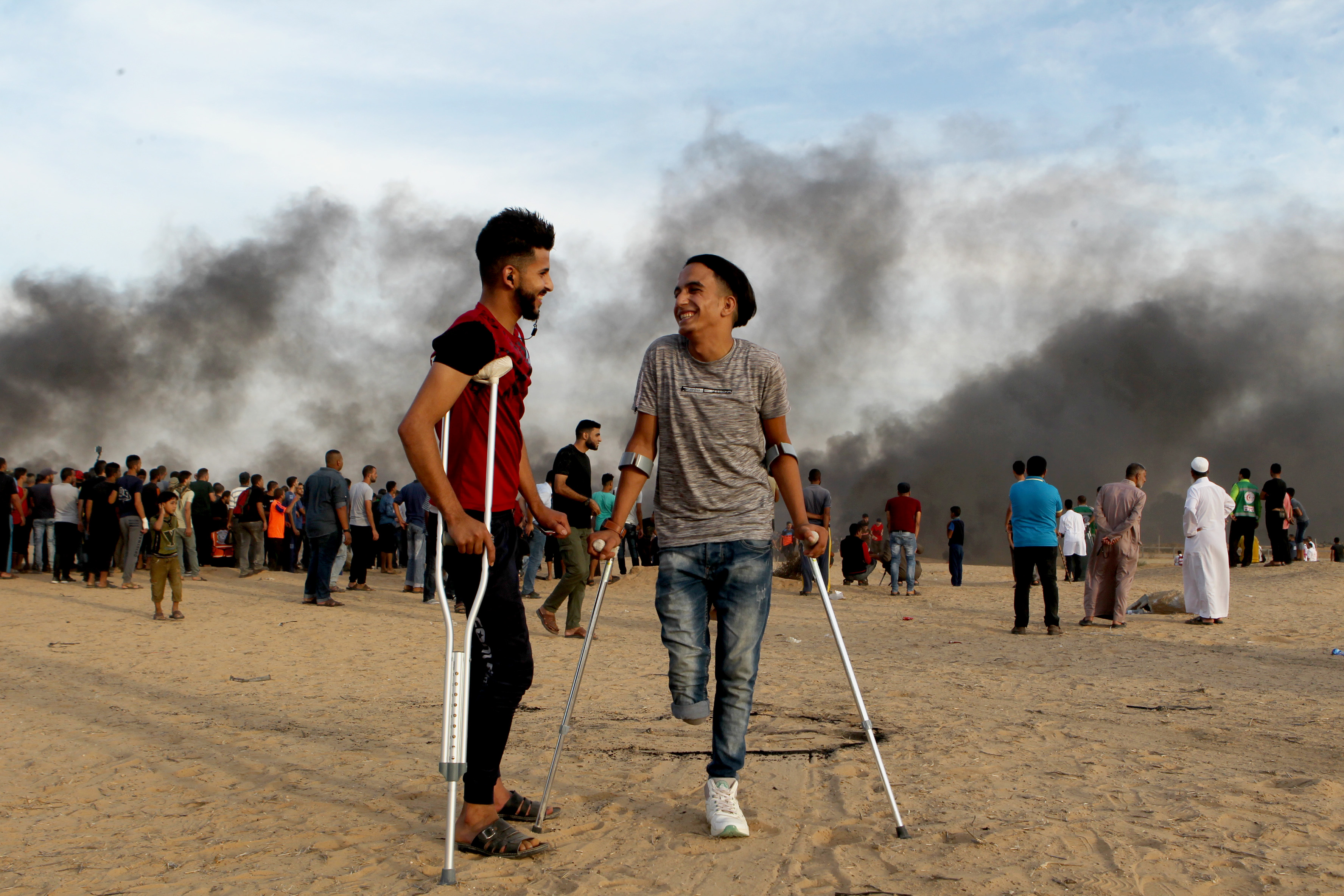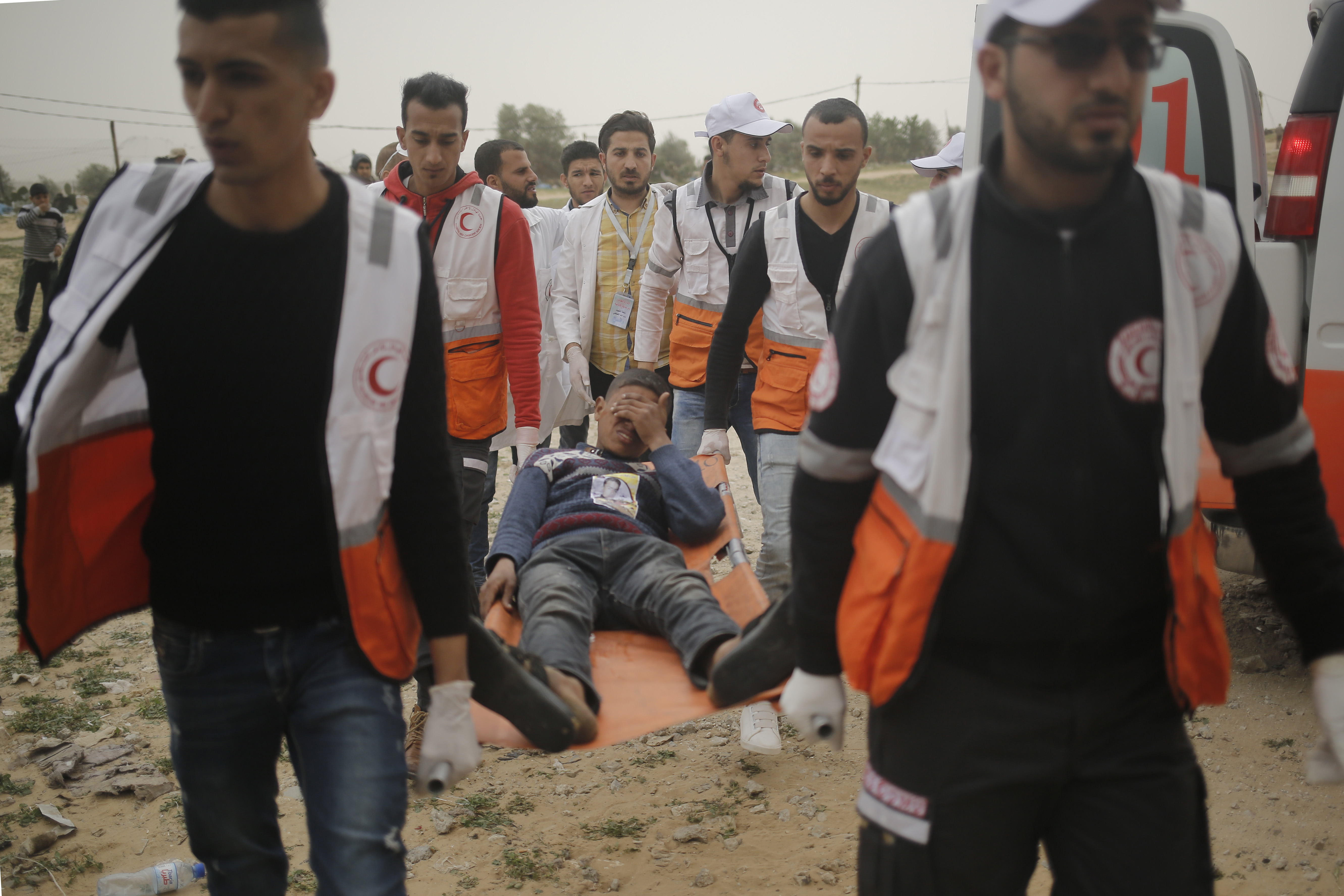 29 May 2019 - The World Health Organization (WHO) in collaboration with over 20 agencies conducted a detailed analysis of one year of trauma injuries in Gaza and its humanitarian impact. From 30th March 2018 to 30th March 2019, 277 Palestinians were killed and 28,014 injured.
29 May 2019 - The World Health Organization (WHO) in collaboration with over 20 agencies conducted a detailed analysis of one year of trauma injuries in Gaza and its humanitarian impact. From 30th March 2018 to 30th March 2019, 277 Palestinians were killed and 28,014 injured.
Although any health system in the world would be overwhelmed if it had to manage such a high influx of trauma casualties, the most pressing concern is the staggering number of gunshot wounds – 6872 or 25% of the total casualty caseload. Out of those, 87% were to the limbs.
172 people became permanently disabled because of their injuries, of whom 36 are children. The biggest cause of permanent disability is amputation. In one year, 121 amputations took place. WHO estimates that the damage caused by high-energy gunshot wounds has resulted in some 1209 to 1746 patients who will need specialized tertiary treatment. Without this treatment being made available in Gaza, the number of amputations may drastically increase in 2019.
“Making the services available by setting up treatment centres, such as the osteomyelitis treatment centre, deploying emergency medical teams from abroad, and providing essential medical resources, must remain a priority. But this can only be achieved with the support of the international community. Humanitarian and development actors must work side-by-side for the next phase of this response,” says Mr. Jamie McGoldrick, the Humanitarian Coordinator for the occupied Palestinian territory.
 Photo credit: WHOWHO supported the Ministry of Health and Palestine Red Crescent Society in establishing trauma stabilization points (TSPs) where wounded patients receive life-saving care close to the point of injury. TSPs have proven to save lives and also removed a burden of 41% of the trauma caseload from the already overwhelmed hospitals. Overall, it is estimated that between 435 and 1227 lives were saved thanks to the established trauma referral pathway.
Photo credit: WHOWHO supported the Ministry of Health and Palestine Red Crescent Society in establishing trauma stabilization points (TSPs) where wounded patients receive life-saving care close to the point of injury. TSPs have proven to save lives and also removed a burden of 41% of the trauma caseload from the already overwhelmed hospitals. Overall, it is estimated that between 435 and 1227 lives were saved thanks to the established trauma referral pathway.
“Trauma interventions in Gaza are not only a response to the emergency but also a longer-term investment in building the capacity of the health system to address the critical service gaps that have persisted for years,” says Dr Gerald Rockenschaub, head of WHO’s office for the occupied Palestinian territory.
The Gaza trauma response demonstrates that collective efforts, with adapted and localised solutions can provide many people with timely, life-saving care. WHO continues to support the Ministry of Health and partners in delivering critically-needed medicines and medical equipment, upgrading the trauma pathway, building capacity for health workers to respond to the growing health needs and to reinforce the quality of trauma care in Gaza.
Full report: Emergency Trauma Response to the Gaza Mass Demonstrations 2018-2019








